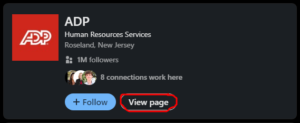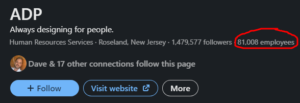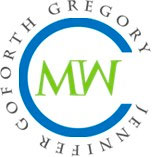Guest post: Updated advice on how to find potential freelance writing clients
Note from Jennifer: One of the most frequently asked questions I hear from writers is “how do I find potential clients?” And this is probably the most important question anyone can ask because, obviously, without clients we have no work and no money. The good news is that there are LOTS of potential clients out there for every niche and the same steps will help you find leads whether you’re a B2B tech writer or if your business is focused on bird watchers or cake decorators or yoga instructors.
Because I am still recovering from my trip to the Content Byte Summit in Australia, I arranged for Cat DiStasio, a B2B HR and technology writer, to share her process. Watch for my recap of the conference tomorrow. Spoiler alert – it was amazing.
Finding potential clients is a pain in the neck. There, I said it. It’s time-consuming and tedious and repetitive work. But it’s also necessary. In all my years as a freelancer, I haven’t figured out (or heard of anyone else who has figured out) how to avoid it altogether. So here we are. We have to do it. And this is how.
I want to start off by saying a thing. I learned the basics of these methods from Jennifer herself, following her advice and examples (from here on the blog and her book, too). I also help run the Freelance Content Marketing Writer group on Facebook where this topic is SUPER common. Plus, as I said, I’ve been doing this myself for a long time and my experience has taught me some things. Not magic tricks or silver bullets, but concrete useful things which I will share with you below.
In this post, I will explain how to:
- Find potential client companies (direct brands and agencies);
- Identify the best contact person for your outreach; and
- Find email addresses for those contacts.
Also, I’ll throw in some top tips for how to reach out to potential clients. So you can literally use this post as a step-by-step guide to outbound marketing.
Finding Potential Client Companies
What makes a perfect client is completely subjective. If you haven’t yet, you’ll need to spend a little time figuring out what your perfect clients look like. For marketing outreach, just focus on the visible attributes, e.g. the things you can tell about a company by looking at their website. This will probably include industry, type of product/service they offer, location, whether they already publish content marketing, and so on.
Once you know that you’re looking for companies who sell tools and equipment to bird watchers, you’ll want to do a little research to learn what those things are and what companies make them. Maybe one category in your niche is apps for bird watchers. (This would be a great one if you’re looking to add a technology niche!)
From here, Google is your best friend. Search for “top apps for bird watchers” and chances are, any list that comes up will be a good place to start. Once you have a list of company names, you can move on to the next step. I highly recommend using a spreadsheet to collect lead info as you do your research but you can also use Hubspot’s free version if you’re comfortable with it.
This works for agencies, too, though you’ll probably have to broaden your niche. Search “top content marketing agencies for recreational apps” or “content marketing agencies for hobby apps” to start. You can also search for agencies in your city or state. Location doesn’t matter a lot but some agencies like advertising that they work with local writers.
You can also use a list or directory of content marketing agencies, such as:
- Clutch Top Content Marketing Agencies
- AgencyList (by state/niche)
- Hubspot Solutions Directory (make sure to filter by ‘content creation’)
Identifying the Best Contact Person
To land a contract writing for a company’s blog, you do not want to reach out to the accountant, the customer service manager, or (in most cases) the CEO (more on that in a bit). You want to talk to someone in the marketing department, typically the Content Marketing Manager, Marketing Director, or Editorial Director.
You’re going to find out who these individuals are by leveraging the wealth of information people offer up on LinkedIn. You don’t even need a premium account to do this.
Step 1: Find the company page on LinkedIn. (Looking on the company website for the LinkedIn icon is most effective but you can also search on LinkedIn and click “view page” under the company name.) 
Step 2: On the company page, you’ll see info about how many employees are on LinkedIn. This is a hyperlink. Click it!  Step 3: This brings you to a list of all employees of that company with public profiles on LinkedIn. In the search bar at the top, you can start looking for job titles. I like to search for individual terms like “content” and “marketing” to start off. For agencies, you probably need to get more creative, literally. Search “creative director,” “editorial director,” “head of creative” and similar.
Step 3: This brings you to a list of all employees of that company with public profiles on LinkedIn. In the search bar at the top, you can start looking for job titles. I like to search for individual terms like “content” and “marketing” to start off. For agencies, you probably need to get more creative, literally. Search “creative director,” “editorial director,” “head of creative” and similar.
Step 4: Hopefully, you can find someone at that company that has one of these actual job titles. If so, great! Grab their name and job title and add them to your spreadsheet.
Step 5: If there are no exact job title matches, try to find the next best person.
-
- For direct companies, this could be anyone in marketing. Look for “demand gen manager,” “marketing manager,” or “marketing coordinator.”
- For agencies, people in the marketing department work on marketing the agency—not on hiring freelance writers for client work. So it can be trickier to find the right person. Instead, look for “account manager” or “project manager.”
Find email Addresses for Contacts
So far, your lead spreadsheet includes company name, website URL, contact name, and contact job title. What’s missing? An actual way to get in touch with them. email is my favorite vehicle for this but I’ll offer some other options at the end.
Very few people publish their email address on their LinkedIn profile, so I don’t bother looking there. Instead, I use one of a few tools to find (or come up with an educated guess) their email address.
- Hunter.io is a web-based tool. There’s a free account that allows 25 searches a month or paid options for more. Basically, you enter the domain name (companyname.com or similar, same as their website) and it displays any email address that is public on the web (anywhere). Then there’s an option to “find by name” so you can search for the specific individual. Based on the format of other email addresses, Hunter will guess what that person’s email is. It’s usually right.
- Wiza.co is a tool I recently learned about but haven’t used much myself. It’s a browser plugin that allows you to pull an email address from a person’s LinkedIn profile. In the process of finding a contact, I don’t usually visit every profile but if you want to do that, using Wiza would make a lot of sense.
- Other options include Apollo and Finder.Expert and I’d love to hear from anyone who has tried them or has other suggestions!
What does NOT work for email outreach:
- Submitting a web “Contact Us” form
- Sending an email to a generic email like info@ or contact @
- emailing the CEO (I promise I’ll say more on this later!)
How to Reach Out to Prospective Clients
Once your spreadsheet is complete, mark off a block of time on your calendar, refill your beverage of choice, and hunker down for the real slog. When you work with sizable batches of leads (20, 25 or more at a time), it’ll go faster than you think!
Using email for outreach:
Like I said earlier, email is my preferred method. I use Hubspot so I can log and track each email, meaning I’m building a record of communications with that company (even if it ends up being multiple people) and I can look to see when emails are opened or forwarded. I also think emails make it easier to follow up, because I can just go to my Sent folder for that date and everything is right there.
- Make sure your LOI is up to date and customized for each niche you’re targeting.
- Draft a separate email to each contact on your list. Do not email yourself and BCC your leads because it will save time. They’ll see that you took a shortcut in your email header—or your message could be automatically flagged as spam and never even reach them.
- Set a calendar reminder in two weeks to follow-up with anyone who didn’t reply.
Using LinkedIn for outreach:
Maybe you have a case against using email. Or, you just couldn’t find an email address for a given contact. Then, you may decide to reach out on LinkedIn first instead and that’s totally doable. Here’s what most successful writers say they do:
- Send a connection request with a brief message, such as “We both work on marketing to bird watchers” or “Does (your company) work with freelance writers for content marketing?”
- Send a connection request with a full LOI (the same message you would email).
- Follow-up either types of introduction, once connected, with another message in a week or two.
What’s the Deal with CEOs?
I made you wait and I’m sorry. But this piece of advice doesn’t really fit anywhere above. Most (like 99%) of the time, you will not be reaching out to a CEO, Chief Marketing Officer, or someone else in the C-suite. The exceptions are:
- When you REALLY want to work with a brand and you literally cannot find anyone else to contact
- For very small brands and agencies, where the CEO may also happen to be the person in charge of sales and marketing
- If your niche actually calls for you to engage with C-suite clients, such as executive ghostwriting or thought leadership. (Although, in my experience, the content marketing team will still manage this process so definitely start there!)
That’s it. Simple, right? It seems like a lot of steps because it is. But as we agreed before, there’s no way to avoid reaching out to potential clients if we want to keep working. Batching tasks will help you make good use of your time and, if you have the budget available, this is a perfect project for a virtual assistant to help with (researching companies, finding contacts, looking up email addresses).
Do you have any questions about finding potential clients? Tips to share?



There’s another step you and Jennifer usually add when on the Facebook group: Don’t get discouraged when you don’t hear back! That simple statement helps us realize we’re not alone in our rejections.
Cat, Many thanks for your exceptional advice on finding clients. I’ve been transitioning from full-time work to self-employment and have always wondered if I’m targeting the best job titles. Your agency directories — are invaluable. I imagine this will help a lot of freelance content marketing writers.
I use Apollo and it’s amazing. It can pull emails from LinkedIn even if you don’t visit the profile of the person. Also, you can set up automation on Apollo and immediately put the email of the person into your LOI sequence.
If you have a business email address, Apollo is free to use (for 95% of the things we need).
[…] More Advice on How to Find Potential Clients […]